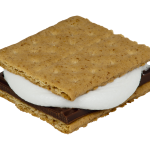Are Your Workouts Building Your Brain? (What?!?) by Joan Kent, PhD
A long-term study followed 1,583 middle-aged men and women with no history of dementia or heart disease over 2 decades. Before-and-after tests done 20 years apart showed that the ones who had stayed in shape had larger brains, while the poorly conditioned ones had lost gray matter.
Holding on to gray matter prevents cognitive decline and decreases the risk of dementia. No specific type of exercise was explored in that study, however.
And that’s a perfect lead-in to the still-ongoing debate over Cardio and High-Intensity Interval Training (HIIT).
Fans Of HIIT Stack the Deck
I have nothing against high-intensity intervals. I use them often in my own workouts and include them when teaching, as well.
But when staunch advocates of HIIT compare its benefits with standard cardio, they cheat.
For die-hard HIIT fans, the word “cardio” is code for lame-o exercise of low intensity. No surprise, then, that the benefits of such lame workouts – if any – would fall far short of the benefits of HIIT.
But no one challenges the criteria. So let’s challenge them.
You Can Go Hard AND Long
It’s not true that intense training must involve short intervals of, say, 20 to 60 seconds. If you train well aerobically and train seriously enough to achieve the full spectrum of aerobic benefits, you can maintain a high level of work for a long time.
HIIT pushers seem to ignore the fact that elite marathon runners run faster than 5-minute-mile pace for 26.2 miles. Most people would find it difficult, if not impossible, to run one 5-minute mile. It’s a fast pace. And elite marathoners hold faster than that for a couple of hours.
Matt Fitzgerald – well-known marathoner, trainer, and author of several books and many articles – states, “well-trained endurance athletes really don’t have to slow down much as they increase the duration of their efforts. We are not the folks reading magazines on elliptical trainers.”
I’m the furthest thing from an elite athlete you can imagine, but even I have done cycling time trials on Mt. Diablo. The first one took me 44 minutes at a consistent heart rate of 173 – fairly high for me, making the climb a combination of hard and long. (See, I told you I’m no elite athlete.)
Why Not Combine Cardio With HIIT?
The training combination that appeals to me most is fitting 8-10 intense intervals into a long training of moderately high intensity.
And there’s evolutionary evidence that this way of training is precisely what we were always meant to do.
In his book Born to Run, Christopher McDougall reveals the blend of morphology, paleontology, anthropology, physics, and mathematics that led to understanding how humans became the greatest distance runners in the animal kingdom.
There’s no way this short article can do justice to McDougall’s fascinating and detailed description of the emergence of homo sapiens over Neanderthals (they were parallel species), and the evolution of humans as supreme hunters hundreds of thousands of years before the creation of the tools we usually associate with hunting (spearheads, bows and arrows).
Evolutionary changes included:
- upright posture to allow deeper breathing and limit retention of the sun’s heat;
- the ability to release body heat by sweating, rather than panting like other mammals until they must rest or die of hyperthermia;
- the ability to accelerate once the pursued animal has been run to exhaustion.
So human “persistence hunting” combined endurance running with short sprints. Humans evolved to run in conditions that no other animals can match, and it’s easy for us.
Good At Endurance (For a Long Time)
Endurance athletes can typically continue into what’s considered old age in other sports. Older distance runners can still out-perform teenagers or 20-year-olds until their mid-60s.
The most notable thing my then-35-year-old coach, Jim Karanas, saw at his first double-marathon was the age of the runners, mostly 45 to 55. From that, he knew immediately that the ultra-run was, most importantly, a mental challenge.
McDougall quotes researcher Dr. Dennis Bramble, who said, “If you don’t think you were born to run, you’re not only denying history. You’re denying who you are.”
But Let’s Not Limit This to Running
Endurance athletes of other types display similar results. Stories abound of master’s cyclists in their 50s and up outperforming younger cyclists.
In his 50s, my coach used to race against cyclists in the 30-year-old category – because he could perform better against them than against the experienced cyclists his own age! The older guys kicked his butt when he first started to race.
Coach Jim was also one of the few (and the oldest that weekend) to ride the notorious Furnace Creek 508 fast enough to qualify for RAAm, the Race Across America.
Conclusions
So the choice isn’t really between short, intense intervals and long, slow cardio with a magazine. Cardio should be hard enough to cause a training effect, not help you catch up on your reading.
The right kind of training is not either/or, but both. That perfect combination is effective, enjoyable, sustainable over the long haul, and entirely in sync with our evolutionary nature.
And don’t forget the importance of proper fuel for training. If you’d like tips to enhance your workouts, I’d love to help you. Just visit LastResortNutrition.com and grab your free Food&Training consult. Discover how easy it can be to put more into your workouts and get more out of them.
Brought to you by Dr. Joan Kent, best-selling author of Stronger Than Sugar.



